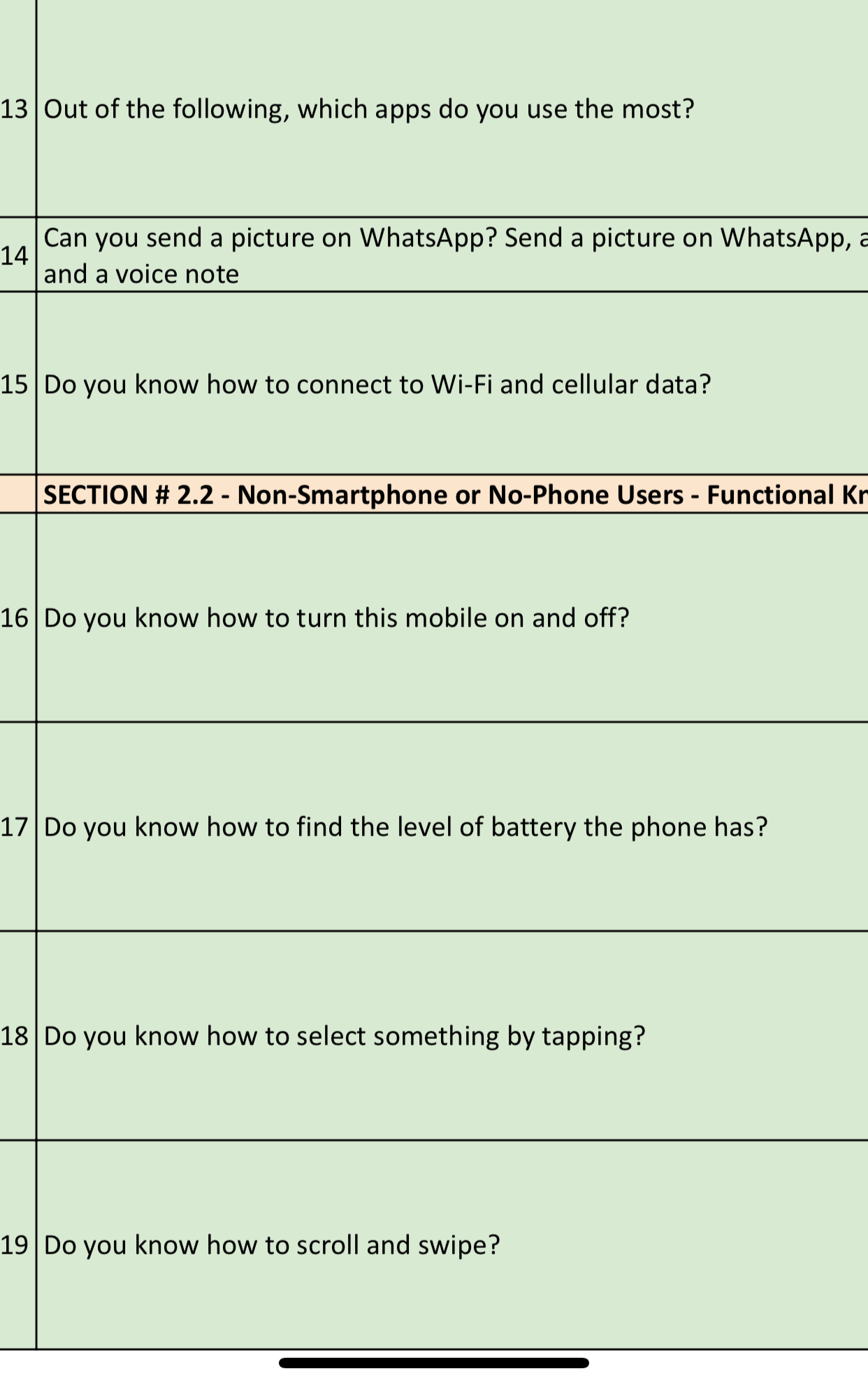From Paper to Real‑Time: Designing a Low‑Literacy Data & Sales System for Rural Women
I led research and design for a three-app ecosystem (CRP App, CBO Supervisor App, and Dashboard) that cut data lag from 12 days to less than 24 hours and empowered first-time smartphone users.
100+
CRPs onboarded
PKR 1M
sales in month one
Real-time data dashboard
for global teams
End-to-end product rollout
research, design, dev, training
Project Overview
Client: RSPN (Pakistan) and Gates Foundation
Role: Research Lead, Product Strategist, UX Designer
Timeline: 2022–2023
Team: Program Managers, Field Researchers, Data Engineers, UX
CRPs (Community Resource Persons) in rural Pakistan, most of whom had never used smartphones, relied on manual paper registers and WhatsApp groups to track data and product sales. This created delays of 7–12 days and frequent errors. Supervisors (CBOs) lacked visibility, while program managers and donors needed real-time insights to make timely decisions.
The Challenge:
Many CRPs had zero prior digital experience, making even basic smartphone navigation intimidating.
CRPs handling 200–300 manual records.
Manual reporting was slow and error-prone, with long delays between field activities and data visibility for program managers.
The system had to work offline, be intuitive for first-time users, and require minimal training, all while meeting the Gates Foundation’s high data quality standards.
Goals:
Create cell-phone literacy-friendly interfaces that reduce cognitive overload and avoid technical jargon.
Build a training experience that teaches CRPs both phone basics and app usage simultaneously.
Deliver real-time dashboards that aggregate field data automatically, eliminating manual entry delays.
Scale with minimal support overhead while maintaining data integrity.
“Our field workers have never touched a smartphone, we had to build a tool they could trust, use, and even enjoy.”
Research Methods
-
Observed CRPs during door-to-door visits, mapping pain points and workflows.
-
Interviews and observations with CRPs in rural communities to understand workflows, literacy levels, tech friction, and device usage.
-
Tested smartphone familiarity, 60% were first-time users.
-
Iterative prototyping (low → high fidelity) tested with CRPs for comprehension, flow efficiency, and error prevention. Tested UI patterns (voice prompts, large icons)
-
Pre/post training assessments, qualitative feedback loops, in-field testing.
-
On-ground and remote training, operational SOPs, support scripts, and feedback cycles.
Key Personas
(CRP)
Profile: Low-income, low literacy, very low digital experience.
Language: Prefers Sindhi.
Tech: First-time smartphone user, minimal internet access.
(CBO Supervisor)
Profile: High-school/associate education, mobile-savvy.
Language: Trilingual (Sindhi, Urdu, some English).
Tech: Moderate digital familiarity, uses WhatsApp and basic reporting tools.
(Program Managers, Donor Team)
Profile: Highly educated, data-driven decision maker.
Language: English.
Tech: Advanced, needs real-time dashboards and metrics.
Top Insights
Cognitive Load > UI Complexity
CRPs needed one task per screen, clear affordances, and large touch targets.
Connectivity is Unreliable
Offline-first design and queued sync reduced data loss and anxiety.
Language & Symbols Matter
Localized language and meaningful iconography boosted comprehension.
Training is as critical as Product
In low-literacy contexts, training design is as critical as UI/UX.
Design Principles
Minimal cognitive overhead, maximum clarity
Offline-first, sync-later
Progressive disclosure (step-by-step).
Immediate feedback → sustained engagement
Local language, local metaphors
Data transparency for both field and HQ
What We Built:
CRP mobile app for activity logging, sales tracking, and community engagement.
A supervisory app to supervise field activity.
A real-time web dashboard for decision-makers across Pakistan, the US, and beyond.
Structured training, onboarding & support protocols to ensure consistent data quality.
“Within weeks, CRPs who had never used smartphones were logging sales with confidence.”
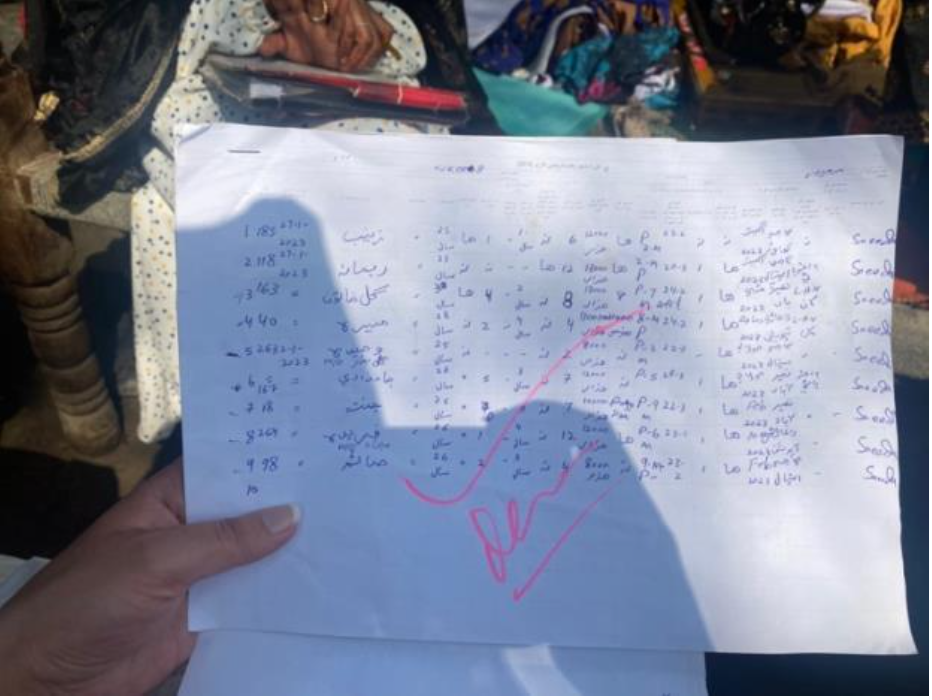
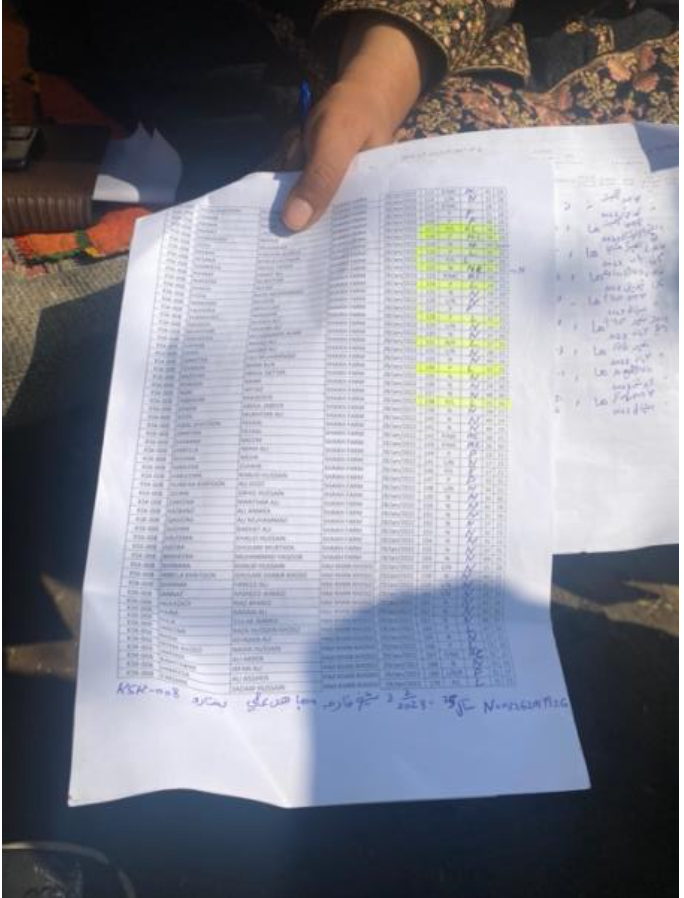
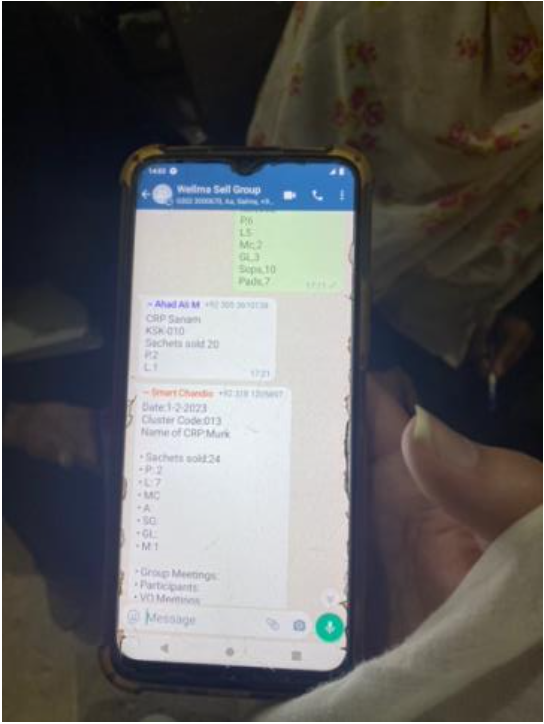
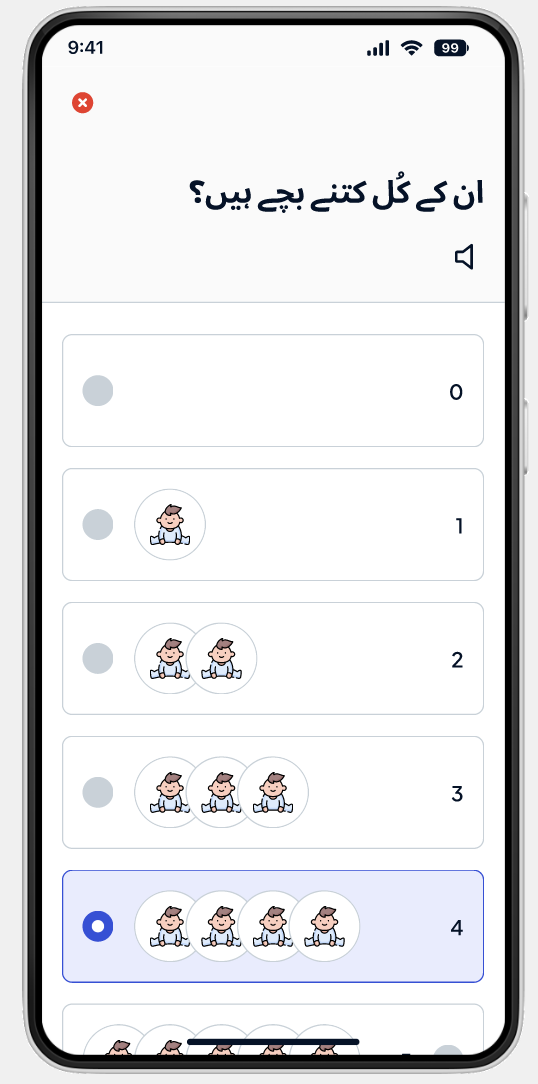
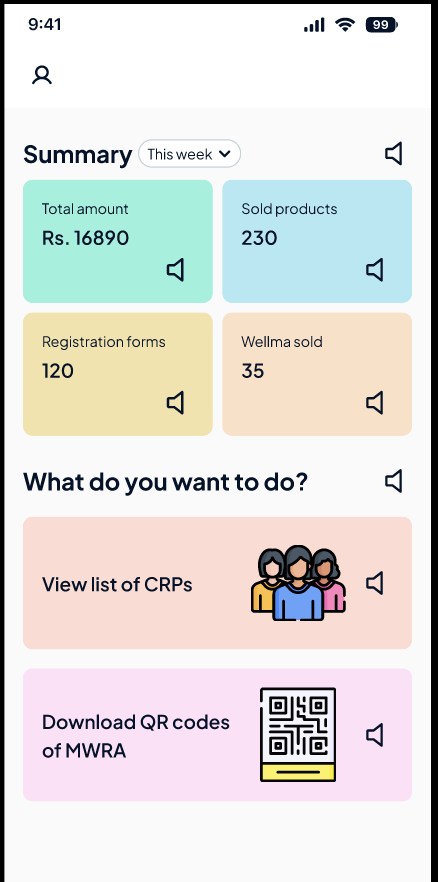
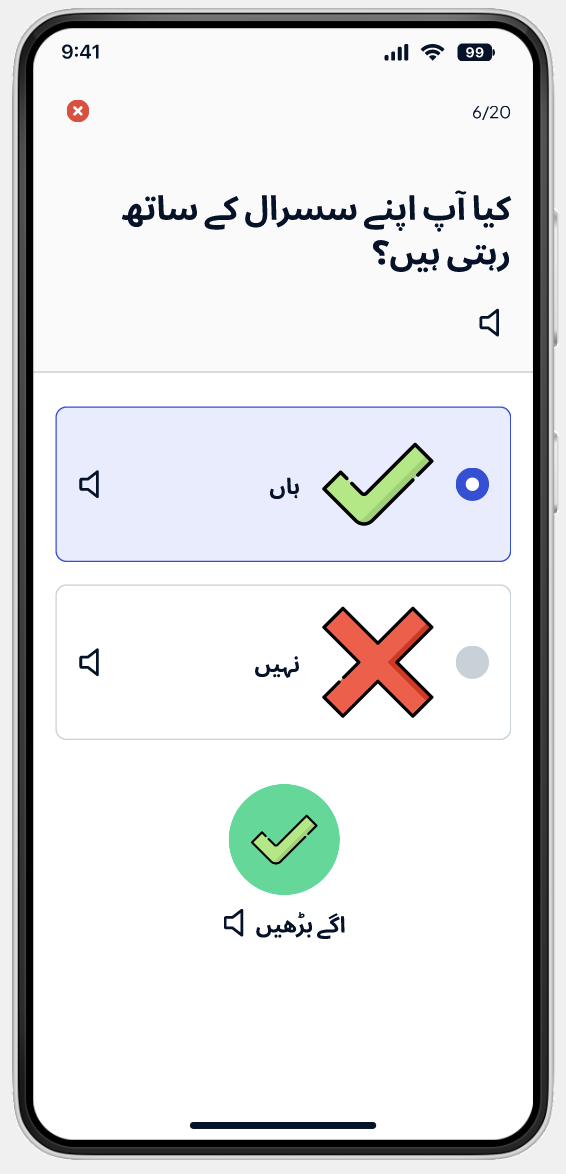

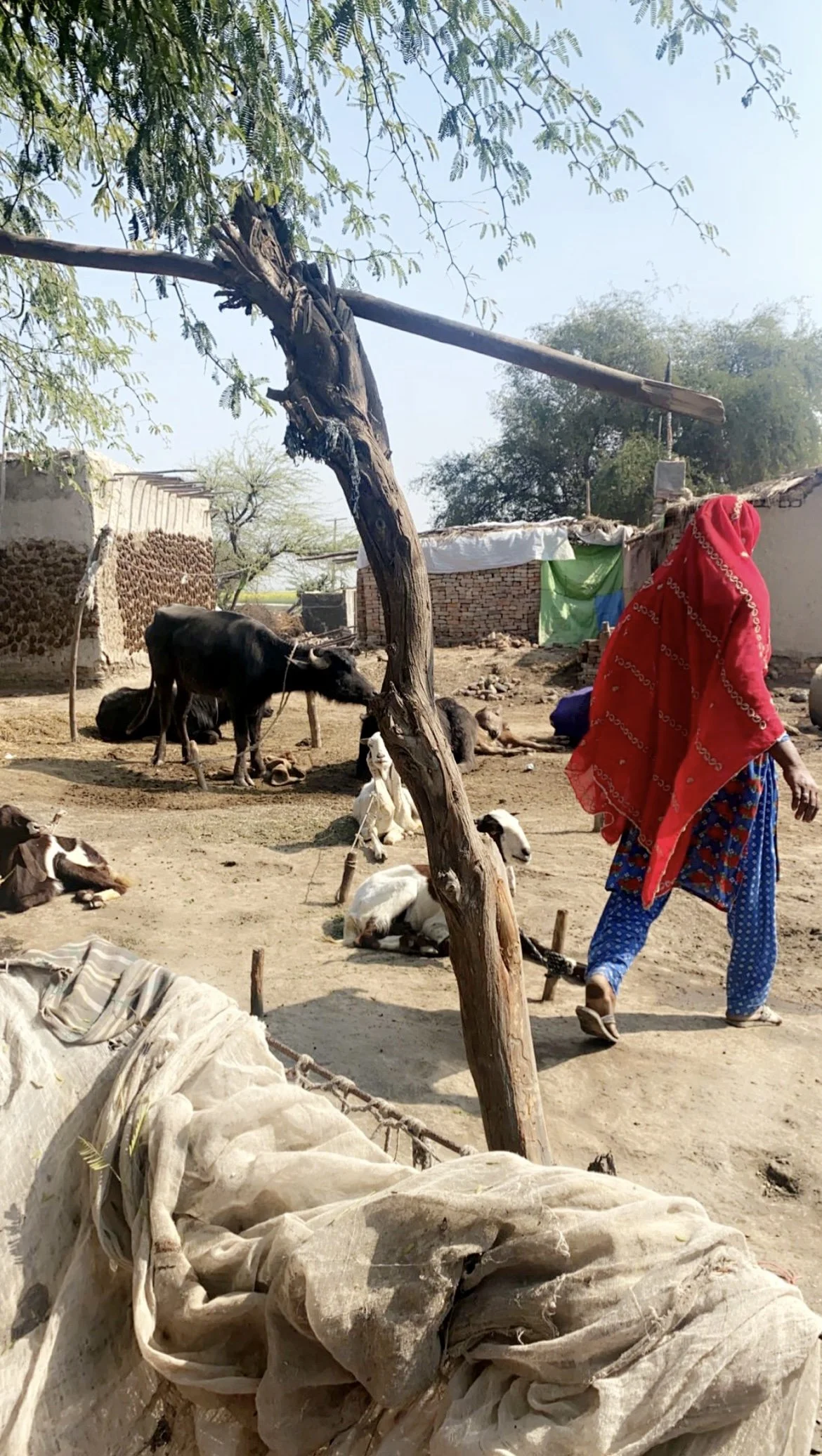
Lessons for Future
-
We discovered that onboarding CRPs, who were first-time smartphone users, was as critical as building the app itself. The training modules had to be designed as part of the product experience, not as an afterthought.
-
Observing small gestures, like where CRPs tapped or paused, revealed hidden friction points. These observations informed UI refinements such as repositioning primary action buttons.
-
Integrating localized voice prompts in Sindhi helped overcome literacy barriers and provided immediate feedback, making the technology feel approachable and reliable.



